Fly Fishing Tasmania
Tasmania as a fishery
Discover Tasmania’s incredible fishing scene! With its coastal wonders, this beautiful island offers a variety of fishing opportunities for residents and visitors alike. From rock fishing and surf fishing to sheltered water angling and offshore expeditions, there’s something for everyone. Prepare to cast your line and embrace the thrill of fishing in Tasmania’s stunning waters
Welcome to Tasmania Fly Fishing, where we’re passionate about the amazing inland fishery, particularly the renowned Brown Trout. Our rivers, lakes, lagoons, and tarns offer a variety of thrilling fishing options that are both rewarding and occasionally challenging. But hey, that’s all part of the excitement, right? Join us on an unforgettable fishing journey through Tasmania’s beautiful inland waters. Let’s have a blast and reel in some incredible catches together
Fly Fishing Tasmania
Tasmania, a hidden gem for dry fly trout fishing enthusiasts! Brace yourself for an extraordinary experience in this picturesque paradise. Our streams, creeks, and river systems offer pristine, crystal-clear waters in stunning native settings. And guess what? They’re teeming with plenty of wild trout! Get your gear ready and immerse yourself in the tranquil beauty of Tasmania’s unique trout fishery. It’s time to indulge in the joy of dry fly fishing and create unforgettable moments amidst nature’s finest backdrop.
Tasmania, the pioneer of trout introduction in the Southern Hemisphere! Our island state boasts a rich fishery, with Rainbow Trout, Brown Trout, Brook Trout, and Atlantic Salmon making their home in our waters. Among them, the resilient Brown Trout has truly flourished, thanks to the perfect conditions and environment it found here. While saltwater fly fishing may not be as common, adventurous anglers who are up for the challenge will discover thrilling opportunities with a little dedication and perseverance. So, get ready to dive into Tasmania’s remarkable fishing scene and uncover the hidden gems that await!
Our Favorite Locations
High on our list of favorite rivers are the: St Patrick River, South Esk River, North Esk River, and the Meander River, including many of their feeder streams and creeks. These waters can provide amazing twig water fishing, especially at hopper time.
Our favorite lakes and lagoons include the: Nineteen Lagoons, Penstock Lagoon, Little Pine Lagoon, Four Springs Lagoon, Arthurs Lake, Augusta Lake, and Lake Leake. There are so many options, it’s impossible to name them all. The above-listed waters allow for excellent sight fishing, dry fly fishing, tailing fish stalking, and wet fly searching opportunities.
Get ready for an extraordinary fishing experience in Tasmania’s scenic locations. Brace yourself for exciting moments as fish eagerly rise to red and black spinners, highland duns, caddis flies, damsel flies, gum beetles, and dragonflies. But that’s not all! Prepare for unforgettable memories as you witness the remarkable mudeye (dragon fly larvae) migrations, jasid falls, and hopper seasons that will stay with you forever. Get set to embark on an unforgettable journey through Tasmania’s picturesque fishing spots and create lasting memories along the way.
History of Trout in Tasmania
In April 1864, a remarkable event took place when the Norfolk ship arrived in Melbourne, carrying an unexpected cargo: 2,700 live brown trout eggs packed in 30 tonnes of ice. It was a breakthrough, as previous attempts to transport live fish eggs had failed. On May 4th, the first brown trout eggs hatched in Tasmania’s Plenty River, marking a pivotal moment in Australia’s fishing industry. These little trout became the foundation for freshwater fisheries in Australia and New Zealand. The brown trout is highly regarded by anglers worldwide, considered the aristocrat of freshwater fishing. Terry George, President of the Australian Trout Foundation, attests to its sought-after status. Following the brown trout, rainbow trout made their way to Australia from the rivers and lakes of North America, brought to New South Wales from New Zealand in 1894. These introductions have left a lasting impact on the fishing landscape of both countries.
Outside the (tackle) box
At Tasmania Fly Fishing, we pride ourselves on exploring new horizons and going beyond the familiar. While we have a selection of beloved rivers and lakes, we’re always eager to think outside the box and try fresh fishing grounds. Our dedication lies in crafting fun, enjoyable, and unforgettable experiences for you, our valued clients. We invest time in thorough research and reconnaissance of each location we visit. This ensures that our tours not only inspire return visits but also earn glowing recommendations from our satisfied anglers. Join us for an adventure that goes beyond expectations and creates lasting memories.
Contact us now to customise a fishing tour especially for you!
DISCOVER TASMANIA
Tasmania is a fascinating location and well worth exploring, Below is a variety of information to help you gain understanding about out beautiful home, Tasmania
David Attenborough – Tasmania Documentary
National Geographic – Tasmania Documentary
Discover Tasmania – Tasmanian Tourism Department Arm
Tourism Tasmania – Tasmanian Tourism Department Arm
Tasmania, often affectionately called Tassie, is an island state of Australia. Situated 240 km (150 mi) south of the Australian mainland, it is separated by Bass Strait. Tasmania comprises the main island, ranked as the 26th-largest in the world, as well as 334 surrounding islands. With a population of approximately 526,700 as of March 2018, over forty percent of the residents live in the Greater Hobart precinct. This area includes the vibrant state capital and largest city, Hobart.
Covering an area of 68,401 km2 (26,410 sq mi), Tasmania is renowned for its natural beauty. The main island itself spans 64,519 km2 (24,911 sq mi). With a strong focus on preservation, approximately 42% of Tasmania’s land area is dedicated to protected areas, including national parks and World Heritage Sites. Notably, Tasmania holds the distinction of being the birthplace of the world’s first environmental political party.
Before British colonization, Tasmania is believed to have been inhabited by indigenous peoples for approximately 30,000 years. The Aboriginal Tasmanians were geographically separated from mainland Aboriginal groups around 10,000 years ago due to rising sea levels, which formed Bass Strait. At the time of colonization, the Aboriginal population numbered between 3,000 and 7,000 individuals. However, within just three decades, their numbers were drastically reduced due to a combination of violent conflicts with settlers known as the “Black War,” internal tribal clashes, and the devastating impact of infectious diseases introduced by the settlers. The conflict, reaching its peak from 1825 to 1831, resulted in over 1,100 fatalities among both Aboriginal people and settlers. Martial law was implemented for more than three years during this period.
European settlement on the island began in 1803 when it was established as a penal settlement by the British Empire. The purpose was to secure the land and prevent any potential claims by the First French Empire during the Napoleonic Wars. Initially, Tasmania was part of the Colony of New South Wales, but it gained self-governing status as a separate colony in 1825 under the name Van Diemen’s Land, named after Anthony van Diemen. Over 75,000 convicts were transported to Van Diemen’s Land until transportation ceased in 1853. In 1854, Tasmania passed its current Constitution, and in the following year, the colony received permission to change its name to Tasmania. Finally, in 1901, Tasmania became a state as part of the Federation of Australia.
General Fishing History
Fishing is an ancient practice that has been around for over 40,000 years. It involves catching fish for various purposes. Throughout history, advancements have allowed fishing vessels to venture across oceans in search of fish, and in the 19th century, larger vessels even enabled on-board fish processing. Fish are typically caught in their natural habitats. There are several techniques used for catching fish, including hand gathering, spearing, netting, angling, trapping, and the art of Fly Fishing.
Fishing is not limited to catching fish alone. It can also involve capturing other aquatic creatures like shellfish, cephalopods, crustaceans, and echinoderms. However, it doesn’t include the catching of aquatic mammals, such as whales, which is referred to as “whaling.” Similarly, fishing doesn’t cover farmed fish either. In addition to being a means of obtaining food, fishing has evolved into a popular recreational sport enjoyed by many.
Based on FAO statistics, there are approximately 38 million individuals engaged in fishing and fish farming. The fishing industry, including both wild fisheries and aquaculture, supports over 500 million jobs worldwide, either directly or indirectly. In 2005, the average person globally consumed about 14.4 kilograms of fish from wild fisheries, and an additional 7.4 kilograms from fish farms.
History of Fly Fishing
Many credit the first recorded use of an artificial fly to the Roman Claudius Aelianus near the end of the 2nd century. He described the practice of Macedonian anglers on the Astraeus River:
…they have planned a snare for the fish, and get the better of them by their fisherman’s craft. . . . They fasten red wool. . . round a hook, and fit on to the wool two feathers which grow under a cock’s wattles, and which in color are like wax. Their rod is six feet long, and their line is the same length. Then they throw their snare, and the fish, attracted and maddened by the color, comes straight at it, thinking from the pretty sight to gain a dainty mouthful; when, however, it opens its jaws, it is caught by the hook, and enjoys a bitter repast, a captive.
In his book Fishing from the Earliest Times, however, William Radcliff (1921) gave the credit to Martial (Marcus Valerius Martialis), born some two hundred years before Aelianus, who wrote:
…Who has not seen the scarus rise, decoyed and killed by fraudful flies…
Click for further information on Fly Fishing origins.
Recommended Further Reading / Reviewing:
The Australian Trout Federation
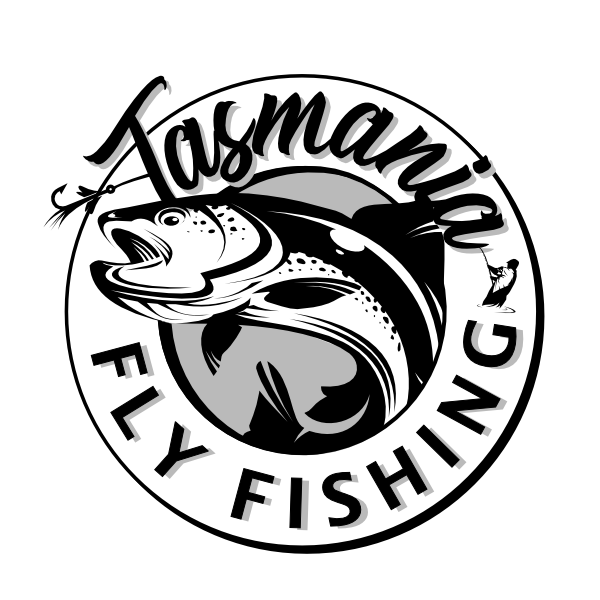

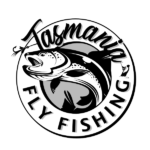
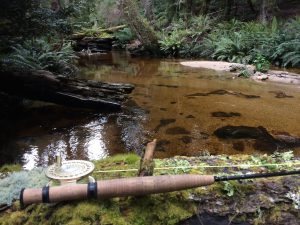
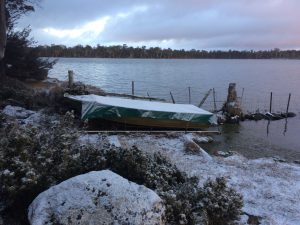
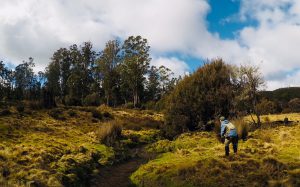
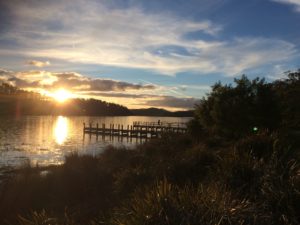


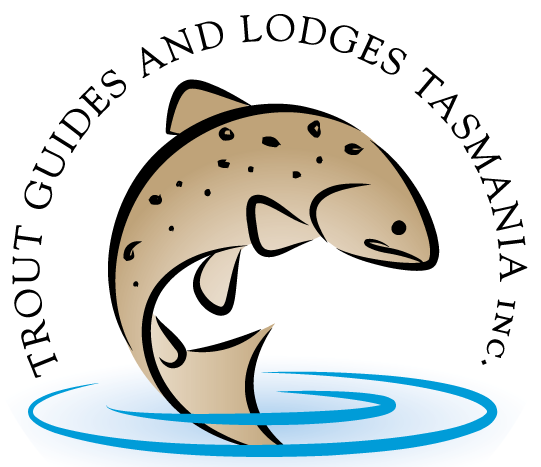

.png)